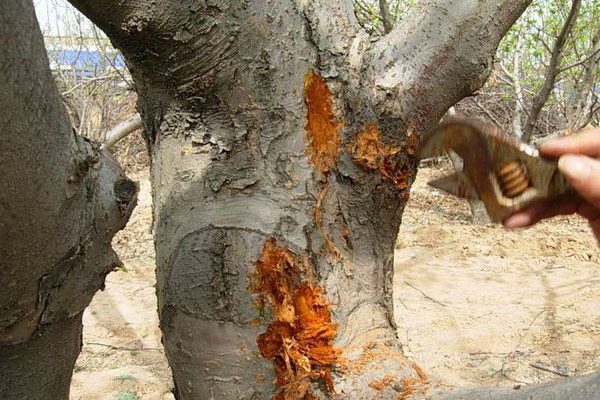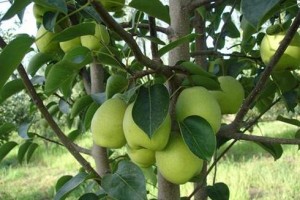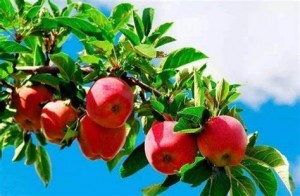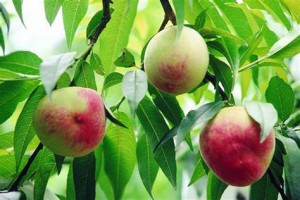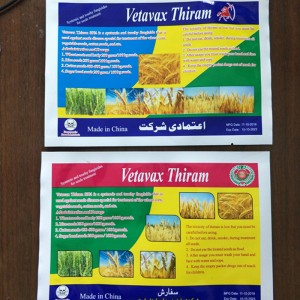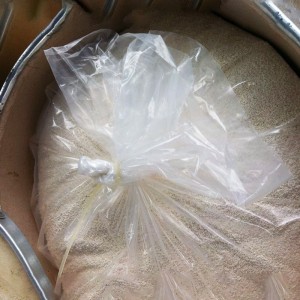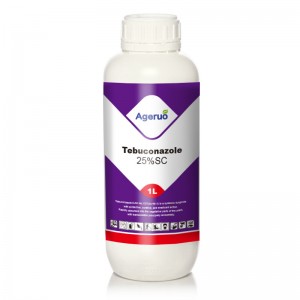Symptoms of rot hazards
Rot disease mainly affects fruit trees that are more than 6 years old. The older the tree, the more fruit, the more serious rot disease occurs. The disease mainly affects the trunk and main branches. There are three common types:
(1) Deep ulcer type: reddish-brown, water-stained, micro-raised, round to oblong disease spots mainly appear on tree trunks, branches and bark. The texture of spring disease spot is soft, easy to tear, hand pressure depression, and the discharge of yellow brown juice, with lees taste. Into the summer, as the temperature rises, the spot shrinks, the edge has cracks, and the skin grows small black spots. When wet, small black spots emit golden tendrils.
(2) Surface ulcer type: mainly occurs in summer, at the beginning of the disease, there are slightly reddish-brown, slightly moist small ulcer spots on the cortex. The edge is not neat, generally 2 to 3 centimeters deep, the size of the nail to dozens of centimeters, with the development of the disease plaque gradually expanded, the plaque appeared rot. In the later stage of the disease, the spot dried and shrank into a cake shape. Ulceration develops in late autumn.
(3) Branch blight type: mainly occurs in 2 to 5 years of the main branch, the early stage of the disease, the branch edge is not clear gray brown spots, the spot does not rise, does not show water stains, with the development of the disease, the spot around the stem after a week, resulting in the spot above the water loss and dry, in the wet conditions of the spot dense black dots.
Occurrence rule
The pathogenic bacteria causing fruit tree rot disease is called apple melanoderma, which belongs to ascomyces subphylum fungi. The ascus forms in autumn. Ascospore colorless, single cell. The asexual generation is called Musa sinensis, which belongs to the subphylum mycetosis. Forming conidium under bark. Overwintering in diseased tissue with mycelium and immature fruiting bodies. The disease began in April of the next year, when the temperature exceeds 10℃ and the relative humidity is above 60%, the disease begins to occur, when the temperature is 24 ~ 28℃ and the relative humidity is above 90%, conidial horn can be produced in 2 hours. The disease occurs at two peak times a year. That is, in March to April and August to September, spring is heavier than autumn. When the tree is strong and the nutritional condition is good, the disease is mild. When the tree is weak, lack of fertilizer drought, excessive fruit, serious disease.
Introduction to Pharmacy
This agent is tebuconazole, which is a triazole fungicide, which mainly inhibits the demethylation of ergosterol on the cell membrane of pathogenic bacteria, so that the pathogen cannot form a cell membrane, thereby killing the pathogenic bacteria. It has the characteristics of wide bactericidal spectrum, long lasting effect and good systemic absorption. It has the functions of protection, treatment and eradication of diseases, and can prevent the invasion of rain and bacteria, and promote the tissue healing of wounds and incisions.
main feature
(1) Wide bactericidal spectrum: Tebuconazole can not only prevent and treat rot, but also prevent and treat various diseases such as leaf spot, brown spot, powdery mildew, ring disease, pear scab, grape white rot and so on.
(2) Good systemic conductivity: Tebuconazole can be absorbed by the rhizomes, leaves and other parts of crops, and transmitted to various parts of the plant through the phloem to achieve the purpose of comprehensive disease control.
(3) Long lasting effect: After tebuconazole is absorbed by stems and leaves, it can exist in crops for a long time to achieve the purpose of continuously killing germs. In particular, paste is used for smearing, and the medicament smeared on the lesions forms a layer of medicine film, which does not fall off, is resistant to sunlight, rain and air oxidation, and can continuously play the preventive and therapeutic effects of the medicine within one year. The duration of validity can be as long as 1 year, which can greatly reduce the frequency of medication and the cost of medication.
(4)Thorough prevention and control: Tebuconazole has the functions of protection, treatment and eradication, and has a good killing effect on the bacteria on the surface of the lesions and the bacteria inside, and the control is more thorough.
Applicable crops
The agent can be used on various trees such as apples, walnuts, peaches, cherries, pears, crabapples, hawthorns, poplars and willows.
object of prevention
It can be used to prevent and cure rot, canker, ring disease, gum flow, bark flow, etc.
Prevention and control measures
(1) Scientific management: Enhancing tree potential and improving tree disease resistance is the basic measure to prevent and control apple tree rot. Do a good job of thinning flowers and fruits, reasonable load, prevent the occurrence of small year, increase the application of organic fertilizer, timely watering fertilizer, prevent premature fruit tree aging, etc., can effectively prevent the occurrence of rot disease.
(2) Pharmaceutical control: Pharmaceutical control is the most effective control method, and the agents for preventing and treating rot are very good. After many years of testing, the best prevention and treatment effect is pentazolol. Tebuconazole has strong permeability, good internal absorption, can be absorbed by stems and leaves, and conducted in the body, through the xylem to transfer the agent to various parts of the fruit tree. It has the effect of protecting, treating and eradicating the rot disease, and the effect is long, and it only needs to be used once a year.
Post time: Oct-31-2023


